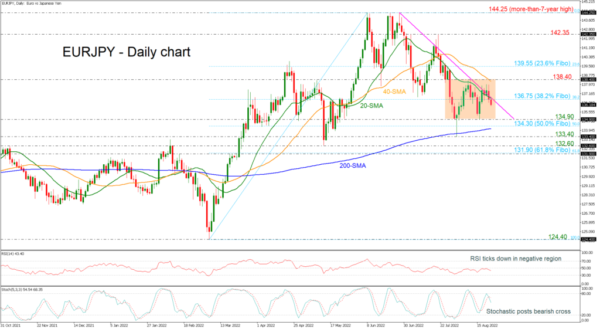GBPUSD inched to a new 29-month low of 1.1716 early on Tuesday, increasing the risk for a downtrend extension below July’s trough of 1.1758. The ongoing bearish correction follows the pullback from February’s resistance line.
The RSI is close to its 30 oversold level and the stochastics are near spring’s lows, making a rebound in the price possible. Yet, as long as the indicators keep sloping downwards and the MACD gains negative momentum below its red signal line, the base scenario is for the pair to keep diminishing.
Once the 1.1758 support gives way, the price could initially take a breather around 1.1670 last active in March 2020 before plummeting towards the channel’s lower boundary and the 2020 bottom of 1.1500 – 1.1408. Additional declines from here may next pause near the 1.1300 psychological mark.
In the event of an upside reversal above the 1.1820 barrier, the spotlight will turn again to the resistance line currently around 1.2000. Slightly higher, the 20- and 50-day simple moving averages (SMAs) both at 1.2073 could then immediately tease any further improvement towards the previous high of 1.2292 and the 1.2300 number.
Summarizing, GBPUSD is still under bears’ control in the short- and long-term picture. A decisive step below 1.1758 is expected to generate additional selling pressures.













